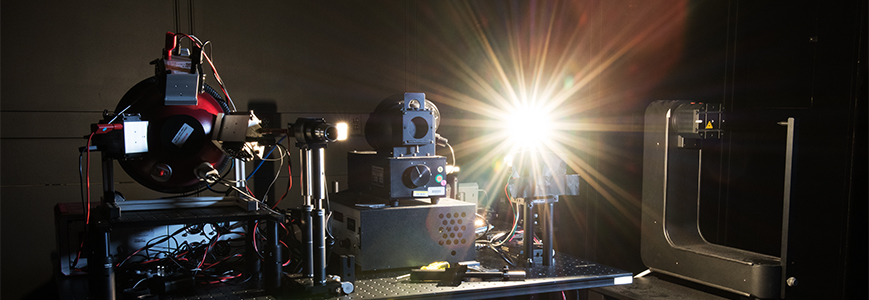Is it really that bright?

How many measurement scientists does it take to screw in an LED lightbulb?
That LED light bulb you’re about to buy says it’s a 60-watt equivalent with a 5-year lifetime. But is it really that bright? And will it actually last that long? Manufacturers want to provide accurate information to their customers, so they count on NIST’s Physical Measurement Laboratory (PML) to make sure they get it right.
Over the past few years, PML scientists have developed novel, sophisticated, highly accurate sensors to measure the exact light output of LED lamps as well as to evaluate the performance of manufacturers’ in-house meters that gauge brightness as perceived by the human eye.
In 2019, PML’s calibration processes were automated to allow a higher volume of testing in a shorter period of time to meet rising demand. The instruments’ readings have extraordinarily low uncertainties: 0.2% or less.
Meanwhile, starting in 2013, PML researchers have conducted multi-year torture tests to measure the actual lifetimes of numerous LED products under conditions of ordinary use. The lamps are placed in controlled enclosure and switched on and off for various intervals at three different temperatures. The first “real lifetime” results are expected by mid-2020.
Those projects are part of a broader comprehensive effort to study the nature of light from solid-state devices, including how it influences human visual response and color perception in living rooms, restaurants, grocery stores, clothing sales, automobile showrooms, and more.
Contacts
-
PML webmaster

